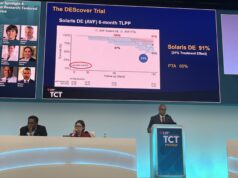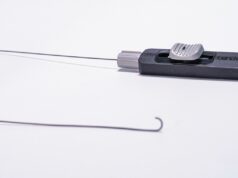
The delivery and exploration of new technology is required to reduce harmful levels of radiation during endovascular procedures, according to Edward Diethrich, a veteran cardiovascular surgeon with first-hand experience of the damage that such exposure can cause.
Following many years’ exposure to radiation in the operating room, Diethrich has suffered from bilateral cataracts, calcified plaque in the right carotid artery and a brain tumour (oligodendroglioma). These issues, as well as his more recent experiences in promoting radiation awareness, have convinced Diethrich that by reducing reliance on fluoroscopy, angiography and computed tomography (CT) imaging in favour of magnetic resonance imaging (MRI) and potential imaging-robotics fusions, the health risks posed by radiation can be dramatically reduced.
As Diethrich described in his book “SLED,” he relayed his early experience with aortograms through his work under Michael DeBakey in Houston, USA, after DeBakey had initially visited Portugal to meet with Cid dos Santos—the pioneer of the aortogram. At the time, many doctors and companies visited Houston to ask for DeBakey’s advice. One such visitor was a representative of Phillips, with whom Dietrich met as a junior associate. Diethrich recalled, “He asked me, ‘What could Phillips do to increase the capability of vascular surgeons in taking care of patients?’ I jumped on the answer; high-quality angiography in the operating room.” At this time, there was no such capability, Diethrich explained, saying that he and his colleagues wished for “something like a cath lab in the operating room.”
In 1971, when visiting Münster, Germany, Diethrich saw a ceiling-mounted hybrid angiography operating suite. “If I had any money in my pocket, I would have purchased it that very day!” Diethrich said. A version of the system was shipped to Arizona, USA, for the newly-built Arizona Heart Institute where Diethrich was working, creating the world’s first hybrid operating room.
At that time, users were not fully aware of the price they would pay for these radiographic images and low-dose ionising radiation exposure. Now, it is known that fixed imaging systems cause up to seven times higher scattered radiation exposure than mobile systems. As mentioned, Diethrich himself faced a host of health problems due to this exposure. He explained the symptoms he experienced as a result of oedema following a chemotherapeutic Giladel wafer implant and recurrent tumour resection, which included flashing lights in his vision and hallucinations of moving figures.
As a result of his diagnoses and health problems, Diethrich began working with the Organization for Occupational Radiation Safety in Interventional Fluoroscopy (ORSIF), including filming a documentary film about the dangers of radiation and the impact it has had on his health.
“I used to think ‘Why me? I protected myself very well,’” Diethrich said. “I was foolish—I did not protect myself at all.” He pointed to advances in protective clothing, with operators “covered from head to toe” with lead-based clothing, as well as the additional safety coverage of the machines themselves. These are the first steps in changes in practice and improvements in technology that will reduce the risk to operators. Diethrich stressed that he believes further changes in the use of imaging—reducing reliance on fluoroscopy, angiography and CT—, and exploration of low-radiation imaging and robotics, should be the next focus of the drive for improved operator safety.
In closing, Diethrich told delegates to “take heed—radiation can really make a great deal of difference in your future; it has for me.”













